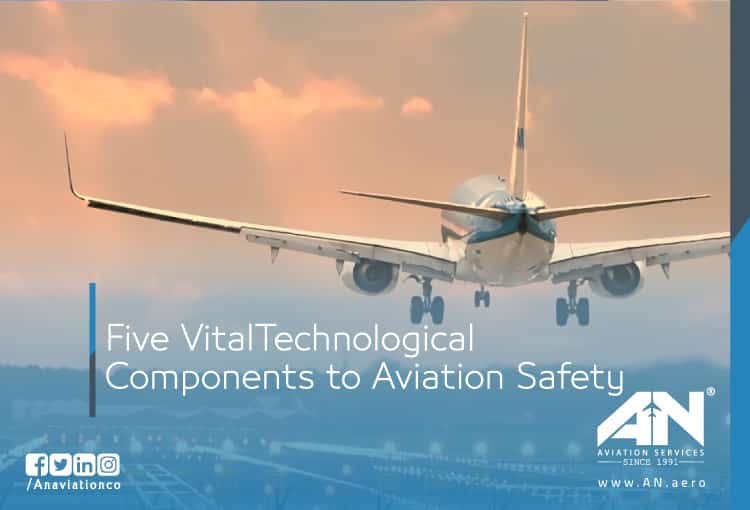
The aviation industry has consistently been at the forefront of innovation when it comes to safety. With millions of passengers relying on air travel daily, ensuring safety is not just a priority—it’s a necessity. Over the years, technological advancements have transformed the way aviation safety is managed, making air travel one of the safest modes of transportation. In this blog post, we’ll dive into five critical technological components that play a pivotal role in ensuring aviation safety, providing a behind-the-scenes look at how the skies remain secure.
1. Enhanced Ground Proximity Warning Systems (EGPWS)
One of the most revolutionary tools for aviation safety is the Enhanced Ground Proximity Warning System (EGPWS). This technology helps prevent Controlled Flight Into Terrain (CFIT), a situation where an aircraft inadvertently crashes into the ground, mountains, or other obstacles.
EGPWS uses a combination of real-time data and a detailed terrain database to alert pilots when they are flying dangerously close to the ground or obstacles. The system provides clear audio and visual warnings, giving pilots enough time to take corrective action. Since its introduction, the number of CFIT incidents has dramatically decreased, solidifying EGPWS as a cornerstone of aviation safety.
2. Traffic Collision Avoidance System (TCAS)
With thousands of aircraft sharing the skies, avoiding mid-air collisions is a top priority. The Traffic Collision Avoidance System (TCAS) is a key safety tool that monitors nearby aircraft to prevent collisions. It works by scanning the airspace for transponder signals from other planes and calculating potential risks.
When a potential collision is detected, TCAS issues advisories to pilots, instructing them on the necessary actions to maintain safe separation. For example, the system may advise pilots to climb or descend to avoid an approaching aircraft. This real-time communication between aircraft has significantly reduced the risk of mid-air collisions, making TCAS an indispensable technology.
3. Weather Radar Systems
Weather is one of the most unpredictable elements in aviation, and managing it effectively is crucial for safety. Weather radar systems are designed to detect and display real-time weather patterns, allowing pilots to avoid hazardous conditions such as thunderstorms, heavy turbulence, or severe icing.
Modern weather radar systems go beyond detecting storms—they can also provide data on wind patterns, including wind shear and microbursts, which can pose significant challenges during takeoff and landing. By enabling pilots to navigate around dangerous weather, these systems ensure smoother and safer flights for passengers and crew alike.
4. Aircraft Monitoring and Maintenance Systems
Modern airplanes are equipped with advanced monitoring systems that constantly check the performance and health of critical components. These systems play a crucial role in predictive maintenance, identifying potential issues before they become safety hazards.
For example, sensors placed throughout the aircraft collect real-time data on engines, hydraulic systems, and other components. This information is analyzed using sophisticated software to detect anomalies or signs of wear and tear. Maintenance teams can then address these issues proactively, reducing the risk of in-flight malfunctions and ensuring the aircraft is always in optimal condition.
5. Digital Flight Data Recorders and Cockpit Voice Recorders
Often referred to as the black box, these devices are crucial for understanding the causes of aviation accidents and improving safety protocols. The Digital Flight Data Recorder (FDR) and Cockpit Voice Recorder (CVR) capture vital information about an aircraft’s performance and the interactions between the flight crew.
In the event of an incident, investigators analyze this data to identify what went wrong and recommend measures to prevent future occurrences. The black box is built to withstand extreme conditions, ensuring that its data remains intact even in severe accidents. These recorders are not only essential for accident investigations but also for improving pilot training and safety procedures.
The Role of Technology in Aviation Safety
The aviation industry’s commitment to safety is deeply rooted in its use of cutting-edge technology. From real-time monitoring systems to advanced warning tools, these innovations have significantly reduced risks, making air travel one of the safest forms of transportation.
Moreover, international organizations such as the International Civil Aviation Organization (ICAO) and regulatory bodies worldwide continuously work to implement and refine these technologies. Collaboration between airlines, manufacturers, and technology providers ensures that the latest advancements are effectively integrated into everyday operations.
Looking Ahead: The Future of Aviation Safety
As technology continues to evolve, the future of aviation safety looks even brighter. Emerging innovations such as artificial intelligence (AI) and autonomous flight systems promise to take safety to new heights. AI-powered systems are already being used to analyze vast amounts of flight data, identify patterns, and predict potential risks with incredible accuracy.
Additionally, technologies like drone inspections and automated air traffic management systems are set to enhance safety further by reducing human error and improving efficiency. The industry’s proactive approach to adopting new tools ensures that aviation safety will continue to advance alongside technology.
Final Thoughts
The safety of passengers and crew is the backbone of the aviation industry, and technology plays a vital role in upholding this commitment. From EGPWS to predictive maintenance, these systems work behind the scenes to ensure that every flight operates safely and efficiently. As innovation continues to push boundaries, the skies will only become safer for future generations.

